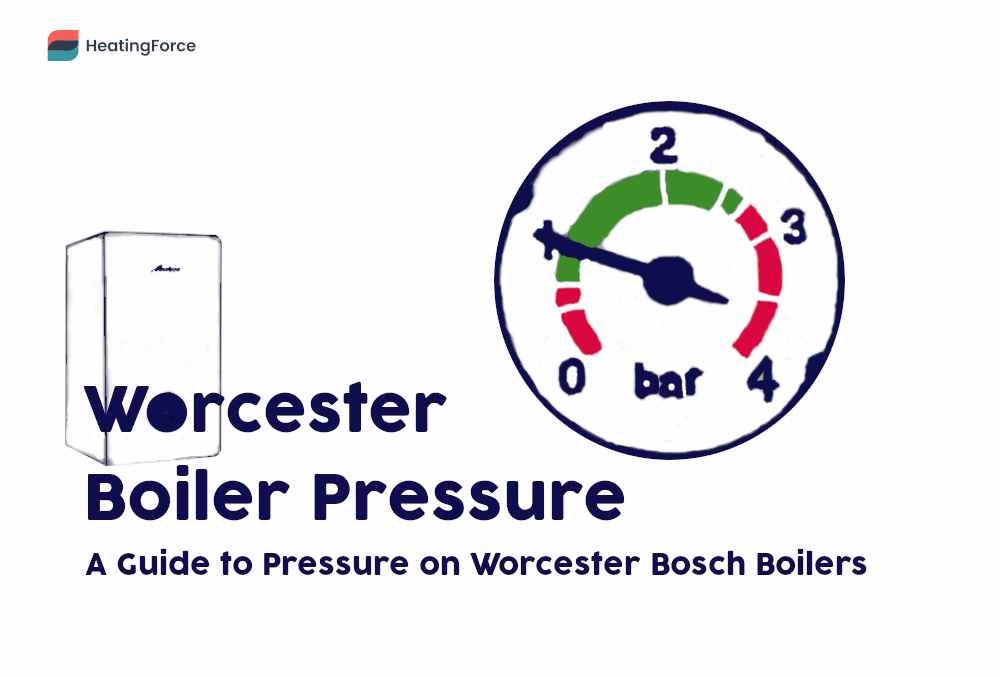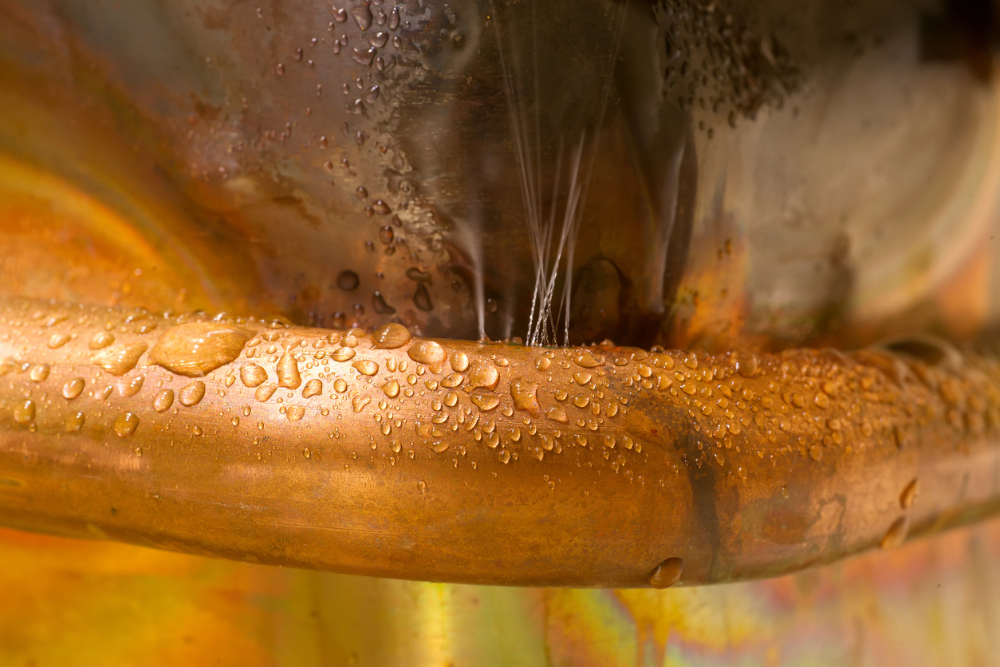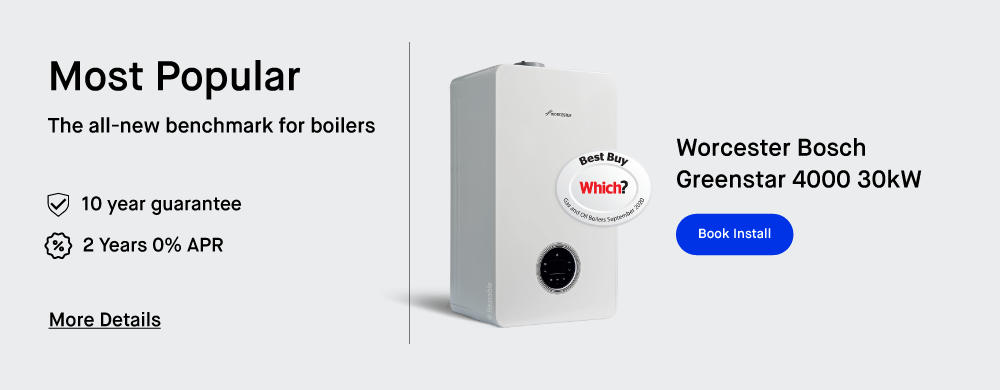Worcester Boiler Pressure: Optimal Boiler Pressure, Faults & Fixes
Worcester Bosch boilers are pretty perfect. But, like most boilers (and humans, for that matter), they’re prone to various maladies brought on by pressure that’s too high or low. That’s why in this post, we will walk you through all things related to Worcester boiler pressure.
You’ll learn what the ideal pressure is for a boiler, and what to do when it fluctuates. You’ll also find out the real risk behind unimpeded boiler pressure rise.
To find out more, read on!

What Your Worcester Boiler Pressure Gauge Should Show
Your Worcester Bosch boiler’s pressure gauge will show a different reading depending on whether the boiler is off, heating water, or suffering from a malfunction. Below, we’ll summarise the different pressure readings you should be seeing on your boiler.
When the Boiler Is Off
Like most other boilers, Worcester Bosch boilers have a “resting” water pressure of 1-1.5 bar. At this pressure, the water in the central heating system is cold, and the boiler is offline.
As the Boiler Heats Up
As a Worcester boiler comes alive and its heat exchanger begins to heat water, the pressure rises. That’s because hot water expands in volume at an accelerating rate as the temperature increases.
For Worcester Bosch boilers, the typical operating water pressure should be in the 1.5-2 bar range.
When the Pressure Is Too Low
When the boiler is offline and the pressure gauge shows a reading of 0.5 bar or lower (which is in the red zone on the dial), the pressure is too low.
Likewise, you can assume that the boiler is losing pressure if the gauge shows anything less than 1 bar while the boiler is on.
Common Worcester error codes indicating pressure loss include:
- EA338
- A281
- A1
- 2971B
The codes above point to a leak in the system, which is the most common cause of any boiler losing pressure.
When the Pressure Rises Too Much
When your Worcester’s pressure gauge shows 2.75 bar or more (also in the red zone), the system pressure is too high.
Since there are no common error codes suggesting high boiler pressure, the pressure gauge itself should be an adequate indicator of the issue.
Low Boiler Pressure on a Worcester: Causes and Troubleshooting

The most common cause behind low boiler pressure (and this goes for all boilers, not only ones made by Worcester Bosch) is a leak.
Another fault that may cause low pressure readings is a broken pressure sensor.
Below, we’ll take a look at both of these causes and help you troubleshoot them.
Leak in the Heating System
A leak that’s causing boiler pressure loss needn’t be in the boiler itself. Whilst it can affect many of the boiler’s internal components, a leak may just as well occur anywhere else in the heating system, including radiators, valves, pipework, and towel rails.
Related Reading: Is Your Diverter Valve Faulty?
Spotting a system leak isn’t always an easy task. It may be as overt as a puddle beneath your boiler, or as obscure as small damp patches on the wall around pipework.
If the leak isn’t immediately obvious, it may be a good idea to call your boiler care company helpline or consult with a heating engineer. These professionals are trained to spot and resolve such issues promptly.
Troubleshooting Leaks on a Worcester Bosch Boiler
If your Worcester Bosch boiler is leaking — or there’s a leak elsewhere in the system — the first, and obvious step would be to locate the leak and repair the affected component. A Gas Safe engineer is best-suited to perform this task, since the leak can come from anywhere between a radiator valve to the boiler’s heat exchanger.
Assuming the leak isn’t affecting the latter — heat exchangers are notoriously costly to replace — the repairs should be simple enough, and the costs reasonable.
Once the leak is gone, the next step involves re-pressurising the boiler. Different boilers have different ways of getting re-pressurised. We’ll walk you through these methods below.
Filling Link
One way would be to insert the internal filling key into the filling link, and open the latter to the position marked by the open padlock symbol. Then, you’d turn the white knob to the left, allowing cold water from the mains to enter the system until the pressure gauge returns to an acceptable reading.
At this point, you can turn the internal filling key back to the closed padlock position and remove it.
Keyless Filling Loop
Another method would involve models with a keyless loop, such as the Worcester Greenstar 4000. With this configuration, all you need to do is turn the blue lever (located at the bottom of the boiler) and hold it open until the system pressure returns to normal levels.
External Filling Loop
Yet another way is to use the external filling loop — if that’s the filling mechanism your boiler model has.
In this scenario, you’ll have to attach the hose to the two valves — the one that connects to the heating system and the one from the mains water. Next, you’d open the mains tap, then the heating system tap, and wait for the pressure to climb to the correct level. You can then turn off the taps and remove the hose.
Pressure Gauge Fault
On rare occasions, the pressure gauge may malfunction, causing you to believe that the pressure is lower than it should be. Such a condition is dangerous, because it may cause you to miss hazardous surges in pressure and also lead you to top up the system more than required.
If you suspect that there’s no leak in the system and yet the boiler seems to be suffering from pressure loss, as a Gas Safe registered engineer to inspect your gauge.
High Worcester Boiler Pressure Causes and How to Fix
Wondering “Why is my boiler pressure high?”
Like with low pressure, there can be several reasons for a boiler’s pressure rising above normal operational levels.
We’ll discuss these below.
Central Heating System Is Overfilled
The most likely reason you’re seeing a pressure increase is that the system has too much water in it.
This may be because you’ve overfilled it while topping up. Or, because the filling loop has been letting water trickle in from the mains.
If it’s the latter, a boiler engineer can disconnect the loop and make sure that its valve isn’t stuck in the open position (which would call for a replacement).
Releasing Water From a System That’s Too Full
You can let the excess water out by bleeding your radiators until the boiler pressure gauge needle returns to 1-1.5 bar.
Safety Devices Are Failing
To protect itself and the central heating system from damage, Worcester boilers are equipped with safety mechanisms that deal specifically with high pressure problems.
For example, a Worcester combi boiler will come equipped with an expansion vessel, which helps maintain the right pressure as the water heats up.
Boilers also feature a pressure release valve, which lets some of the pressure out when it reaches dangerous limits.
Thanks to these mechanisms, the likelihood of anything catastrophic happening when your Worcester’s pressure surges is quite low.
However, if the safety devices fail, the boiler’s pressure may continue rising unimpeded and cause an unsafe situation.
If you see your Worcester’s boiler pressure soaring past 2.75 bar, ask a Gas Safe engineer to inspect the boiler’s pressure release valve and expansion vessel.
Is High Boiler Pressure Dangerous?
High pressure may be dangerous because it overloads the boiler’s components and other parts of the heating system, such as valves and copper pipe; these may sustain damage under excessive stress.
For this reason, you should always get in touch with a Gas Safe heating engineer if you see your Worcester boiler’s needle surging past 2.75 bar on a regular basis. Getting the pressure in check quickly will help avert further damage.
FAQs about Worcester Bosch Boiler Pressure
As we wrap up, we will try to answer some of your most pressing questions about Worcester Bosch boiler pressure.
What pressure should my Worcester boiler be set at?
According to Worcester Bosch themselves, the ideal boiler pressure for a system that’s off is between 1-1.5 bar.
The boiler pressure should rise by about 0.3-0.5 bar when the boiler starts heating water, but should never rise above 2.75 or fall below 0.5 bar.
How do I increase the pressure on my Worcester boiler?
You can increase the boiler pressure on your Worcester by topping up the boiler. The way you’d do this will depend on the type of filling mechanism you have.
You can read more about this procedure here.
That said, do note that you should only top up your boiler once you’ve identified and resolved the root cause behind low boiler pressure.
How do I fix the low pressure on my Worcester boiler?
You’ll have to find out why the boiler pressure is low in the first place. In most cases, it’s because of a leaky central heating component, so you’ll have to locate the leak and repair it before topping up the boiler.
On rare occasions, your boiler pressure can seem low because the gauge is faulty and isn’t showing the correct pressure. In this case, you’ll need a boiler engineer to replace the pressure gauge.
Why does my Worcester boiler keep losing pressure?
In the vast majority of cases — and this applies to all boilers — loss of boiler pressure is caused by leaky central heating systems.
The leaks don’t have to occur in the boiler itself; they can happen in radiators, towel rails, or the pipework.
In other cases, the boiler’s pressure gauge may be displaying incorrect pressure readings, leading you to believe that the pressure is lower than it is.
In either situation, we’d urge you to hire a heating engineer to inspect your appliance and recommend corrective action.
Is It Time for a Replacement Boiler?
If you’ve got an old Worcester Bosch boiler that’s frequently showing signs of trouble — either pressure issues or any other faults — and it’s out of warranty, you may want to stop splurging on repair costs and consider a new boiler.
And to find the best deal on the costs of getting a new boiler, we’d encourage you to get as many boiler quotes as you can, including those from your local heating engineers, national companies, and online installers.
Heatable is a great place to start getting your quotes. They install Worcester Bosch boilers at highly competitive prices, thanks to their online business model and low overheads.
You can fill in Heatable’s 90-second anonymous questionnaire to get a range of fixed-price quotes on a range of regular, system, and combi boilers from various manufacturers. Heatable also offer flexible finance options with all new boiler models.

What’s Next?
We hope our guide to Worcester Bosch boiler pressure was helpful.
Is there anything we missed? If you have any other questions, please drop us a line below and we will answer as soon as we can.
